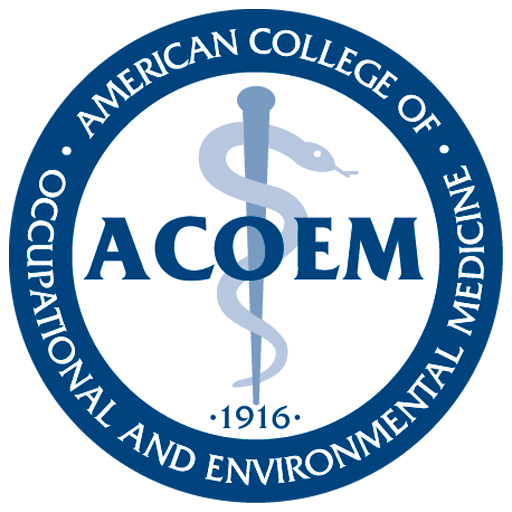
08: Industry Specific Pearls
Transportation modes in the United States, including maritime, railway, aviation, and commercial motor vehicle (CMV), are essential engines of the U.S. economy. Operators with medical conditions that could impair alertness, decision-making abilities, or operational skills pose a large public health risk. Along with an aging U.S. transportation workforce, the prevalence of medical conditions such as heart disease, hypertension, and sleep disorders, which are associated with increased risk of sudden incapacitation, will increase in the coming decades.
Epidemiological data from the National Center for Health Statistics indicate that 13.7% of males between 45 and 64 have heart disease, and over 28% have hypertension. The National Sleep Foundation estimates that 4% of middle-aged men and 2% of middle-aged women experience excessive daytime sleepiness from sleep apnea. A government-mandated process, initiated by the National Transportation Safety Board (NTSB), has been put in place to minimize the risk of an employee performing a vigilance- requiring job if that person has a medical condition or takes medication that could compromise his or her ability to carry out the job safely. As a result, health care providers are often faced with examining high-risk operators and identifying any health risks that indicate the workers should be relieved of their duty to operate vehicles. It is, however, challenging to ensure that operators of aircraft, ships, trains, and trucks are medically fit to operate. This is in part because there are no uniform federal reporting laws or protections from liability for reporting unsafe transportation operators.
Fitness for Duty Requirements in the Transportation Industry
Medical fitness-for-duty standards in the transportation industry vary greatly. Among the most comprehensive and centralized exams is the Federal Aviation Authority (FAA) medical exam, which must be done by an FAA-designated Aviation Medical Examiner according to the standards set forth by the FAA Extension, Safety, and Security Act of 2016. New examiners are added only if there is a need in a particular region, determined by the regional federal air surgeon. Certification duration ranges from six months to three years depending on the aircraft class and age of the examinee.
In 2014, the Federal Motor Carrier Safety Administration adopted a similar centralized model, which requires federal Department of Transportation medical exams to be done by health care providers who are listed on the National Registry of Certified Medical Examiners. There is, however, no current quota on the number of these examiners. The U.S. Coast Guard (USCG) permits any state-licensed health care provider to perform its exams. Mariners need to meet the USCG medical and physical standards specified on a Merchant Mariner Medical Certificate (called a CG-719-K/E). Some CMV drivers (such as public school bus drivers) are covered under state medical standards, which are often based on federal standards, although waivers, grandfathered programs, and exemptions are not uncommon. The Federal Railroad Administration’s medical standards cover only locomotive engineers and conductors for vision and hearing under Code 49 C.F.R. §209.303. Operators of other forms of local transportation often are not regulated according to medical criteria, and many workers who drive as a part of their jobs merely need to hold a valid driver’s license.
Understanding Safety Risks: The Health Care Provider Role
Health care providers who determine the fitness for duty of employees who handle vigilance-requiring transport equipment must understand the safety risks involved in operating a motor vehicle, plane, ship, or train and their role in protecting the public from unsafe drivers. Providers should be well versed in all relevant federal or state regulations issued by agencies such as the FRA, FAA, USCG, and FMCSA covering operators’ occupations. They also need to be familiar with the job requirements of transportation operators who are not covered by the federal standards mentioned above. Providers should consider a patient’s current state of health, medical history, ongoing medical treatment, comorbidity, mental state, and functional capacity or impairments in determining fitness for duty.
A unique element of occupational medicine practice is that examinees may not be incentivized to disclose all medical conditions that may interfere with work safety. Providers must use objective criteria (if any) and third-party record review (if available) to make sound clinical judgments. For example, when screening for obstructive sleep apnea, simply asking if the patient has apnea or a history of snoring during sleep may not be a reliable way to determine whether a sleep screening study should be initiated. Furthermore, results of some portable sleep studies without chain-of-custody technology may have a low negative predictive value.
Monitoring for Fatigue and Other Conditions
The NTSB has noted that a leading factor in transportation accidents is fatigue. Employers must understand their responsibility for ensuring that all employees who operate a motor vehicle can do so safely. Workflow design, shift design, adequate rest, and screening for fatigue-related diseases need to be integrated into an employer’s safety program. Employers also need to ascertain that those who have either a medical condition or an acute change of health condition receive timely and appropriate medical evaluations by medical personnel who understand the medical condition and associated public safety risks. Employers should consider having workers with potentially impairing conditions monitored, which includes having independent medical examinations performed as needed. In some cases, employees might not willingly disclose conditions out of concern for becoming unemployable or incurring medical care costs. In some transportation sectors, employers provide financial assistance for screening and treatment of certain fatigue-related diseases, making employee medical fitness exams a win-win process: employers retain a healthier employee population, and employees identify previously undiagnosed diseases, gaining lifelong health benefits.
Health care providers must recognize the public safety risks inherent in clearing individuals with medical conditions that could impair their ability to safely operate a vehicle. Providers should remember to ask their patients whether they operate a CMV or other similar equipment as part of their job responsibilities. In a situation where the provider is uncertain of the patient’s medical history or ability to safely operate a vehicle, or is unsure of the regulations involved, he or she should consult with an occupational medicine specialist or someone else familiar with this information, or refer to online resources, some of which are listed at the end of this section.
Keep in mind that legally, medical standards programs must comply with the Americans with Disabilities Act (ADA), Health Insurance Portability and Accountability Act (HIPAA), and labor agreements. Still, courts have consistently found that safety considerations may limit ADA application as a matter of law. HIPAA permits medical examiners to provide examination results to federal regulatory agencies and to other stakeholders named in state statutes.
Preventing employees from placing themselves or others at risk of harm due to an inability to perform their job tasks safely is a joint responsibility of employers, employees, and government entities.
Reducing this risk is of particular importance to health care providers who evaluate transportation workers for medical certification, because their decisions must ensure public safety, to the best of their abilities. To protect both transportation operators and the public, ACOEM urges providers, employers, employees, federal and state officials, and all others involved in the transportation industry to work as a team, as part of their professional responsibilities, to help ensure the medical fitness of all individuals who work in this industry.
For more information:
U.S. Department of Transportation. Federal Motor Carrier Safety Administration
https://www.fra.dot.gov/Elib/Document/1600
https://www.transit.dot.gov/sites/fta.dot.gov/files/docs/RxOTC_April2011.pdf
